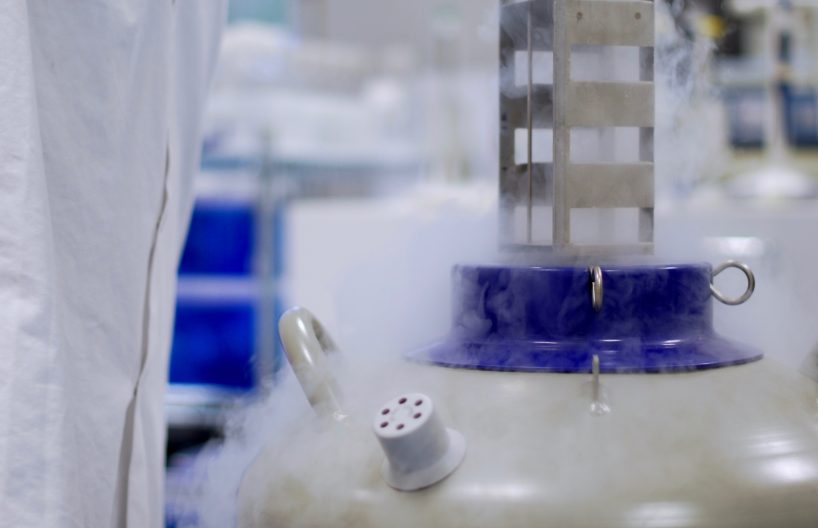
@ShahidNShah


Sponsored Content
Cell line banking is a critical foundation for monoclonal antibody development, providing stability, consistency, and traceability across the entire biologics lifecycle. By establishing well-characterized production cell lines and preserving them under controlled conditions, manufacturers mitigate variability risks inherent in living systems. This process ensures that antibody production remains reproducible from early research through global commercialization.
Cell line banking is a cornerstone of biologics manufacturing, especially in monoclonal antibody development. It involves the systematic creation, storage, and qualification of cell lines that serve as the biological factories for antibody production. By preserving carefully characterized cells under controlled conditions, biopharma companies ensure that their monoclonal antibody production remains consistent over years of clinical and commercial manufacturing.
The banking process addresses one of the main challenges in biologics: variability. Cell lines are living systems, and without proper control, they may undergo genetic drift, changes in productivity, or shifts in protein quality. Cell banking creates a stable, traceable source of production cells, reducing risks of inconsistency that could delay regulatory approval or compromise patient safety.
The structure of cell line development and banking relies on two critical components: the Master Cell Bank (MCB) and the Working Cell Bank (WCB).
The Master Cell Bank represents the original, well-characterized collection of production cells. Created under stringent GMP conditions, it serves as the ultimate reference point for all subsequent manufacturing. Because it is produced in limited quantities and must last the product’s lifecycle, the MCB is safeguarded with extensive testing to confirm its identity, genetic stability, and absence of contaminants.
The Working Cell Bank, derived from the MCB, is used directly in manufacturing campaigns. It provides the operational supply of production cells for monoclonal antibody runs while preserving the MCB as a long-term resource. By working from the WCB, companies minimize the risk of exhausting or compromising the MCB, ensuring that the original production capability remains intact.
This two-tiered system creates resilience, enabling biologics manufacturers to produce consistent batches of antibodies for decades, often spanning preclinical studies, clinical trials, and commercial launches.
For biopharmaceutical executives, the main value of cell line banking lies in its guarantee of product integrity. Each stage of the banking process incorporates rigorous cell line stability testing, biosafety evaluations, and quality control measures. These include verifying that the banked cells maintain genetic and phenotypic consistency, do not carry adventitious agents, and produce monoclonal antibodies with the required properties.
Consistency is not only about safety but also about regulatory and commercial viability. A well-characterized mAb production cell line can repeatedly generate antibodies with identical glycosylation profiles, folding patterns, and activity. This consistency underpins reproducibility in clinical trials and enables the scale-up needed for global commercialization.
Furthermore, comprehensive cell line characterization ensures that sponsors understand the biological and genetic makeup of their production system. This knowledge supports troubleshooting, facilitates process optimization, and reinforces regulatory confidence.
Partnering with an experienced CDMO can provide added value here. Outsourcing ensures access to advanced biosafety testing infrastructure, GMP-qualified storage facilities, and expert teams who routinely manage compliance-critical cell banking processes. For many companies, especially those focused on pipeline expansion, this is far more cost-effective than investing in internal infrastructure – particularly when working with providers in Central and Eastern Europe, where pricing is competitive compared to Western Europe.
Quality and safety in antibodies development are maintained through rigorous characterization and testing of the production cell line. This includes genetic stability assays, contamination screening, and evaluation of antibody quality attributes such as glycosylation. Regulatory frameworks issued by agencies including EMA, FDA, and ICH set detailed requirements for cell banking GMP practices, documentation, and compliance. Meeting these expectations is essential to avoid costly program delays or rejections.
Failure to meet these requirements can result in delays, rejections, or even costly redevelopment. For decision-makers, this highlights why outsourcing to a compliant CDMO with a strong regulatory track record can de-risk the entire antibodies development program.
Despite its established role, cell line banking continues to evolve alongside the broader biologics industry. One challenge is balancing speed and thoroughness. Biopharma companies are under pressure to shorten timelines, yet cell bank creation and testing remain inherently meticulous. CDMOs are responding with optimized workflows that maintain compliance while accelerating delivery.
Another challenge lies in cell line stability over extended product lifecycles. As biologics reach larger patient populations and longer commercial horizons, ensuring that a cell bank remains viable for decades is becoming more critical. Continuous improvement in cryopreservation techniques and storage monitoring addresses this concern.
Future trends also include increased use of digital tools for cell line quality control, with electronic batch records, AI-driven analytics, and cloud-based traceability systems enhancing oversight. Advances in single-cell analysis and genomic sequencing are providing deeper insights into cell line characterization, helping to predict and prevent potential variability before it impacts production.
Cell line banking secures the foundation for monoclonal antibody development, ensuring safety, stability, and regulatory compliance. Partnering with expert CDMOs provides cost-effective, risk-mitigated access to world-class cell banking solutions for biologics programs.

Chief Editor - Medigy & HealthcareGuys.
Full-arch dental implants are a sophisticated solution for individuals missing an entire set of teeth. They involve the strategic placement of implants into the jawbone, ensuring ideal support and …
Posted Sep 25, 2025 Dental Care Dentistry
Connecting innovation decision makers to authoritative information, institutions, people and insights.
Medigy accurately delivers healthcare and technology information, news and insight from around the world.
Medigy surfaces the world's best crowdsourced health tech offerings with social interactions and peer reviews.
© 2025 Netspective Foundation, Inc. All Rights Reserved.
Built on Dec 5, 2025 at 1:29pm